Comment
What’s in a Carrier Strike Group?
Harry Lye takes a look at the ships, aircraft, systems and international partners that will work alongside HMS Queen Elizabeth to form the UK’s Carrier Strike Group 21 as it heads on its maiden operational deployment this year.
HMS Queen Elizabeth will be joined by various types of vessels, F-35Bs and helicopters, as well as a host of international partner vessels when it sails on its maiden operational deployment this year. The task group will be made up of nine ships, aircraft from five different squadrons and two countries, and a total of 3,700 personnel.
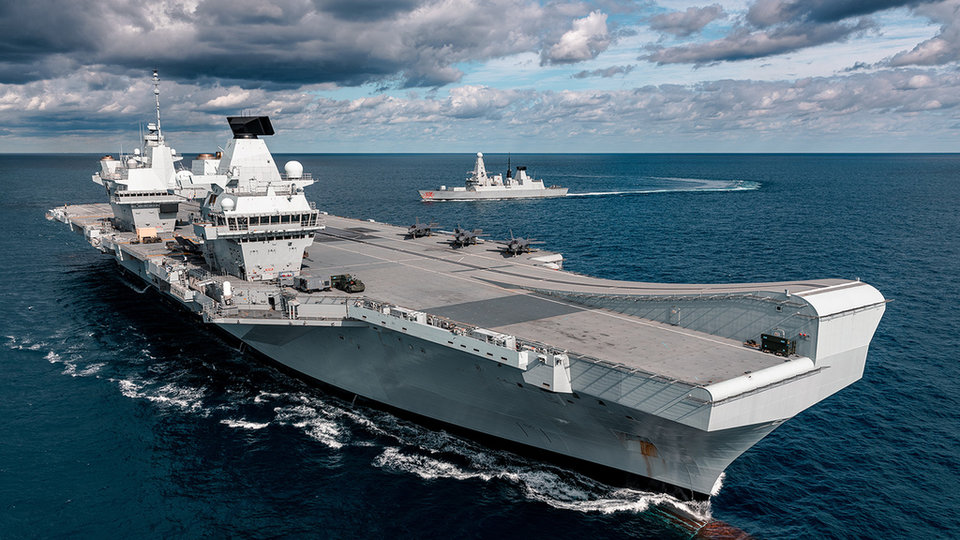
Aircraft carrier: HMS Queen Elizabeth
At the heart of the Carrier Strike Group lies HMS Queen Elizabeth, the first of the UK’s two new aircraft carriers. The ship will carry a mix of F-35Bs from the UK and US Marine Corps as well as Merlin helicopters. The 280m long ship weighs 65,000 tonnes and is capable of speeds of 25-plus knots. This year, HMS Queen Elizabeth assumed the role of the UK’s fleet flagship. On a typical basis, the ship can carry around 40 aircraft.
Type 23 frigates: HMS Kent and HMS Richmond
Joining HMS Queen Elizabeth at sea will be Type 23-class frigates providing the strike group with a number of capabilities including anti-submarine warfare facilities. The frigates carry a crew of 185 and are equipped with Harpoon ship-to-ship missiles as well as anti-air missiles. In the future, this role will be filled by the new Type 26 frigate. (Image: HMS Richmond. Credit: MOD)

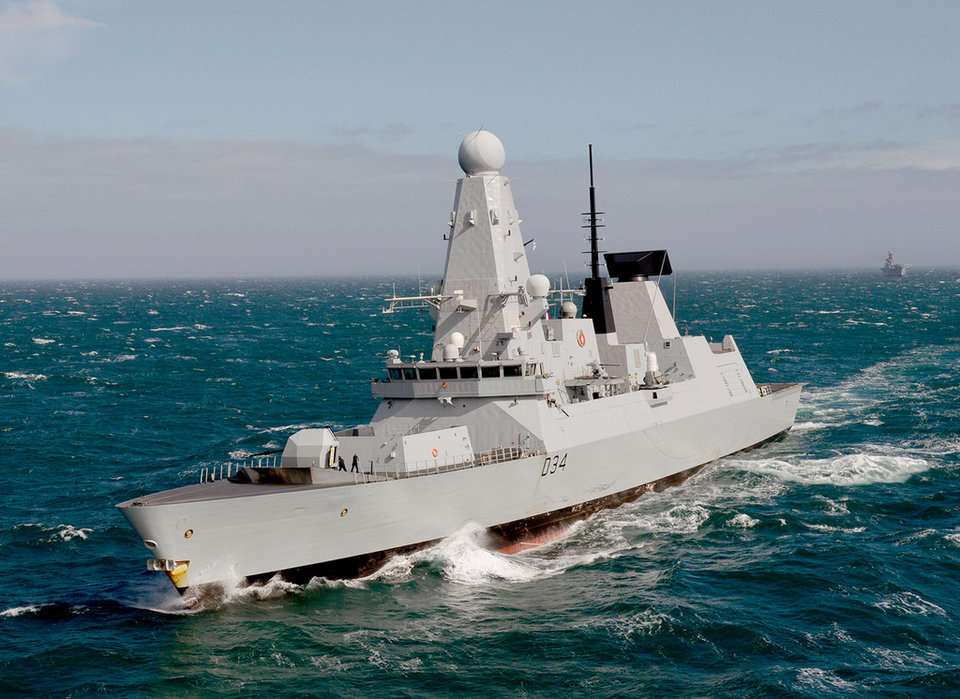
Type 45 destroyers: HMS Diamond and HMS Defender
The Type 45 destroyer acts as the Royal Navy’s primary air defence ship, featuring the Sea Viper air defence system that can engage aerial targets at ranges of up to 70 miles. The six-ship class entered service in 2009. The Royal Navy recently revealed plans to replace them from the late 2030s onwards with a new Type 83. (Image: HMS Diamond. Credit: MOD)
Tide-class tanker: RFA Tidespring
The Tide-class tanker will provide the strike group with fuel, food and water while at sea. The ship is operated by the Royal Fleet Auxiliary and carries the Phalanx close-in weapons system for self-defence purposes. The ship can also be used to carry additional Merlin helicopters. The UK operates four Tide-class tankers with the first, RFA Tidespring entering service in 2017. In the future, the Carrier Strike Group will also be supported by new Fleet Solid Support Ships. (Image: RFA Tidespring. Credit: MOD)
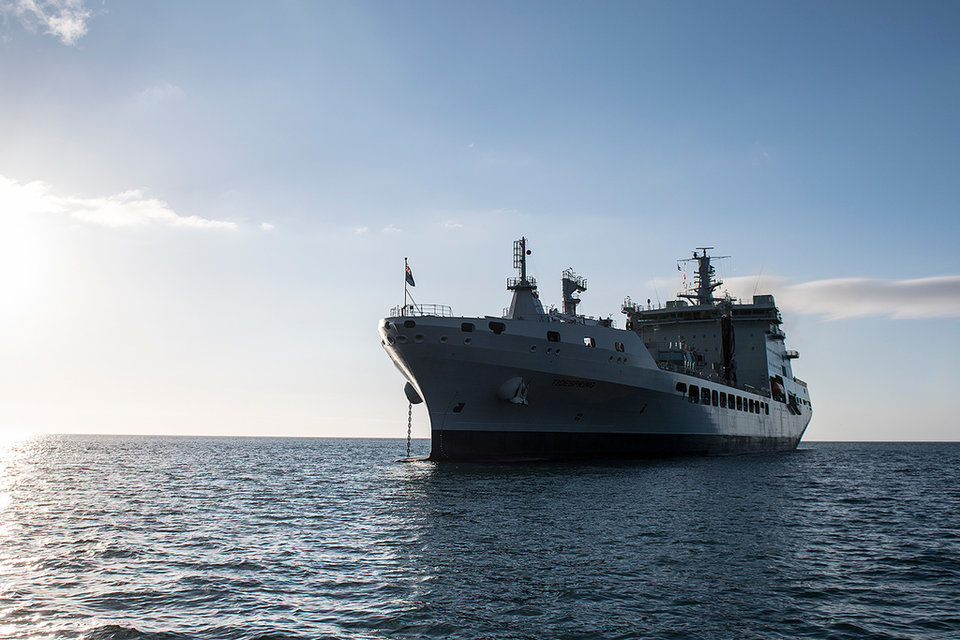
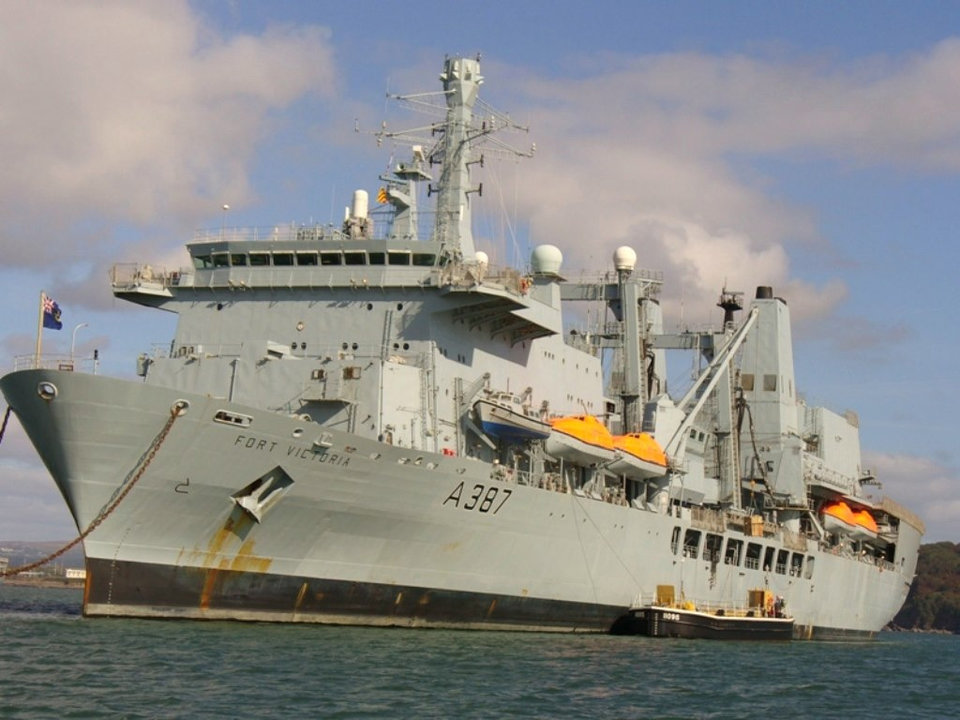
Fort-class auxiliary replenishment oiler: RFA Fort Victoria
The 33,675-tonne RAF Fort Victoria will keep the task group stocked with ammunition, fuel and food while at sea and is the last of her class still in service. In 2018, the ship underwent a refit to better support the Carrier Strike Group, being fitted with extra protective hulls to the ship’s fuel tanks that will be used to resupply smaller vessels in the task group. RFA Fort Victoria has 3,377 cubic metres of space for ammunition and 2,941 cubic metres of space for food and spare parts. (Image: RAF Fort Victoria.)
Astute-class submarines
The Astute-class nuclear-powered attack submarines carry Tomahawk missiles and Spearfish torpedoes acting as the under-sea eyes and ears of the Carrier Strike Group. So far, five Astute-class boats have been built, with four in active service and a further three currently under construction at BAE Systems in Barrow-in-Furness. (Image: Astute-class submarine HMS AMbush. Credit: MOD)

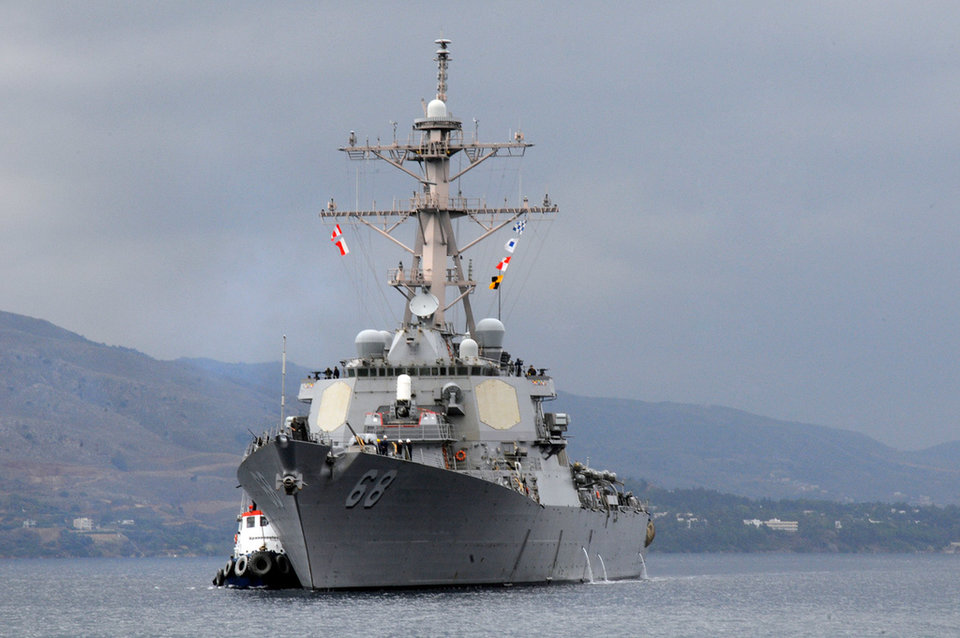
US destroyer: USS The Sullivans
While the UK has yet to confirm which ships of each class will make up the Carrier Strike Group, it has already been confirmed that US Navy Arleigh Burke-class destroyer USS The Sullivans will participate. The ship is named after the five Sullivan brothers who died when USS Juneau was sunk by a Japanese submarine in 1942. USS The Sullivans carries Tomahawk missiles and Harpoon missiles and extends the US commitment to the Carrier Strike Group beyond the US Marine Corps F-35Bs. (Image: USS The Sullivans. Credit: US Navy.)
Dutch frigate: HNLMS Evertsen
HNLMS Evertsen is a Dutch De Zeven Provinciën-class air defence and command frigate adding to the international commitment to the Carrier Strike Group alongside the US’s ship and fighter jet contribution. The 144m long ship carries the Evolved Sea Sparrow missile and Standard Missile 2 Block IIIA (SM-2) as well as Harpoon missiles. In October 2020, HNLMS Evertsen formed part of the Task Group for the Groupex and Joint Warrior Exercises alongside HMS Queen Elizabeth. (Image: HNLMS Evertsen. Credit: Heb on Wikimedia Commons.)
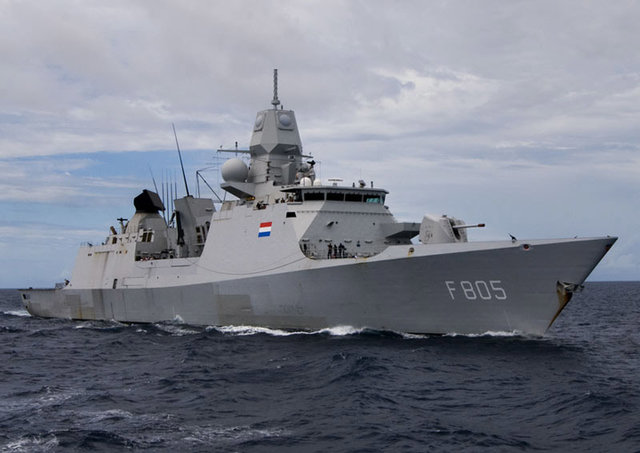
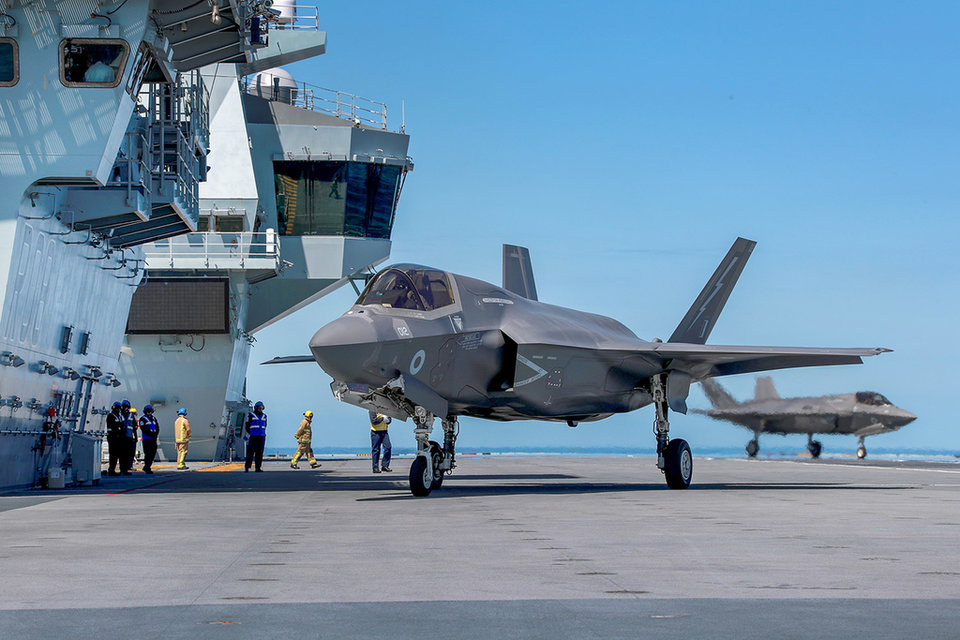
F-35B fighter jets
Making up the Carrier Strike Group’s fast jet component will be a mix of F-35B fighter jets from the UK and US Marine Corps. The short take-off and vertical landing aircraft have a combat range of 851km. The UK has so far ordered a total of 48 jets, with the recent Integrated Review committing to more future purchases without confirming how many. (Image: F-35B embarked on HMS Queen Elizabeth. Credit: MOD)
Merlin helicopters
Two variants of Merlin helicopters will join the Carrier Strike Group, with Mk 4 providing transport for embarked Royal Marines and search and rescue capabilities, and the Mk 2 Merlins carrying the Carrier Strike Group’s Crowsnest airborne surveillance system and providing the capability to spot potential threats. (Image: A Merlin Mk4 helicopter takes off from HMS Queen Elizabeth. Credit: MOD)
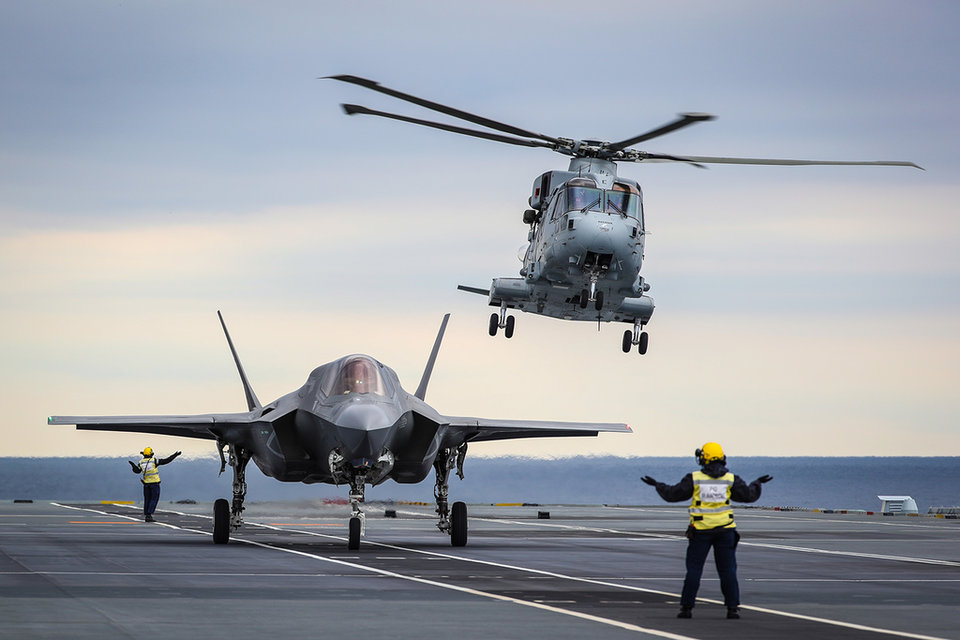
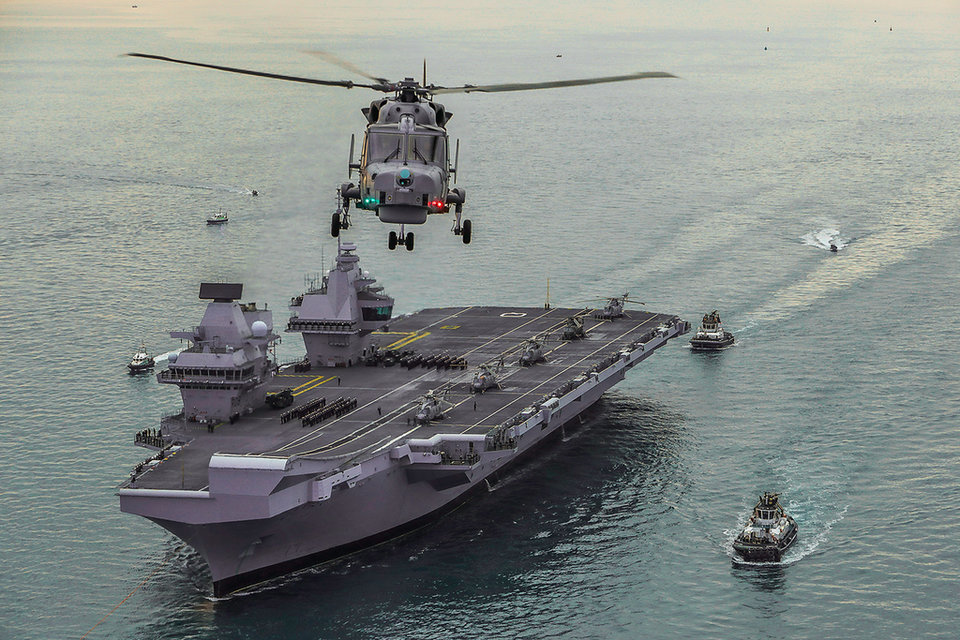
Wildcat helicopters
Procured to operate from the Royal Navy’s frigates and destroyers, the Wildcat helicopter has a range of 420 nautical miles and carries 360-degree radar. The helicopter can carry air-launched Sting Ray torpedoes and a door-mounted heavy machine gun. It is used primarily for anti-surface warfare, force protection and counter-piracy operations. (Image: A Wildcat helicopter takes off from HMS Queen Elizabeth. Credit: MOD)
// Main image: The UK Carrier Strike Group during exercise Westlant 2019. Credit: MOD